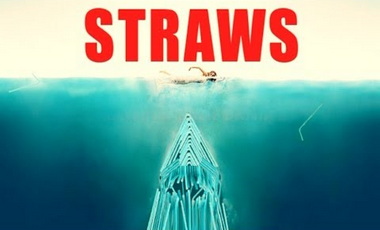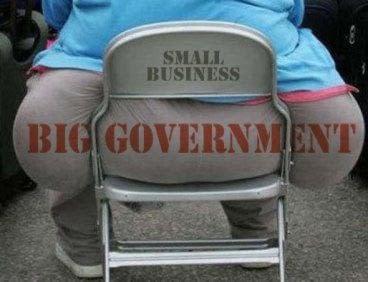PAPER STRAWS
Paper straws are more toxic than plastic straws?
LEGAL INSURRECTION has this perfectly times story to throw in the face of the world Western “do-gooders.”
A new study from Europe suggests those paper straws may contain “forever chemicals” that are harmful to both humans and the environment and were observed more often than in a sample of plastic straws.
Belgian researchers tested 39 straw brands from restaurants and retailers for synthetic chemicals known as poly and perfluoroalkyl substances (PFAS). The study found that the majority of straws contained those chemicals, but they were most common in those made from paper and bamboo.
The chemicals are referred to as “forever chemicals” as they can remain for thousands of years in the environment. The chemicals have been associated with health issues including thyroid disease, increased cholesterol, liver damage and kidney and testicular cancer and can harm the environment as well.
Of the brands tested, 90% of the paper straws contained PFAS, compared to 80% of bamboo straws, 75% of plastic straws and 40% of glass straws. None of the steel straws contained the chemicals.
I had a perfectly lovely “Lava Flow” cocktail ruined by a paper straw that disintegrated on me during my last vacation. I, for one, will encourage a return to sanity and plastic straws.
Next, a new study suggests substituting single-use plastic cups with their paper counterparts is not the environmentally friendly solution that was once believed.
Findings from the University of Gothenburg published in Environmental Pollution reveal that paper cups, once discarded in the environment, can cause harm due to toxic chemicals. In their study, researchers examined the impact of disposable cups crafted from various materials on butterfly mosquito larvae, discovering that paper and plastic cups exhibited comparable levels of toxic damage.
…The researchers explained that paper used in food packaging lacks resistance to fats and water, requiring the application of a surface coating to enhance its performance. This coating, typically made of plastic material, safeguards the paper from contact with substances like coffee.
In contemporary packaging, this plastic film is frequently composed of a bioplastic known as polylactide (PLA). Unlike conventional plastics derived from fossil fuels, bioplastics like PLA are sourced from renewable materials, such as corn, cassava, or sugarcane. While PLA is often considered biodegradable, indicating its ability to break down more rapidly than traditional oil-based plastics under specific conditions, recent research suggests that it can still possess toxic properties.
“Bioplastics do not break down effectively when they end up in the environment, in water. There may be a risk that the plastic remains in nature, and resulting microplastics can be ingested by animals and humans, just as other plastics do. Bioplastics contain at least as many chemicals as conventional plastic,” said lead researcher Bethanie Carney Almroth, professor of Environmental Science at the Department of Biology and Environmental Science at the University of Gothenburg.
Personally, I find plastics greatly contribute to my quality of life. I am very skeptical of the dangers associated with “microplastics,” especially when such analysis fails to consider the benefits of plastic…..
MASKS
An article titled, “The world is throwing away 3 million face masks every minute — and the growing mountain of waste is a toxic time bomb” explains the impact on our environment from masks:
…Scientists and environmental advocates expressed alarm about this tsunami of waste from the jump. They foresaw the dire ecological ramifications of our mask waste — especially once those masks made their inevitable way into the earth’s waterways. Elastic loops pose entanglement hazards for turtles, birds, and other animals. Fish could eat the plastic-fiber ribbons that unfurl from a discarded mask’s body. Then, there is the untold menace to human health that would likely present, at the microscopic level, once masks began to disintegrate.
Now, two years into the pandemic, governments have had ample time to grapple with this serious conundrum: How do we keep people safe from a highly communicable pathogen without unleashing an environmental catastrophe? But instead of heeding the chorus of expert warnings and pouring money into biodegradable and reusable alternatives, world leaders have ignored the problem. And once the immediate public-health emergency superseded ecological concerns — the heads of Big Plastic made sure it stayed that way.
“The plastics industry saw COVID as an opportunity,” John Hocevar, the oceans campaign director at Greenpeace USA, told me from his office in Washington, D.C. “They worked hard to convince policymakers and the general public that reusables were dirty and dangerous, and that single-use plastic is necessary to keep us safe.”
Stateside, Big Plastic’s PR campaign may have hit its apex in July 2020, when the president and CEO of the Plastics Industry Association testified before Congress to argue that single-use plastic was a pandemic health necessity, stating that “plastic saves lives.”
The fear-mongering worked. The global consumption of single-use plastics has increased by up to 300% since the pandemic began, according to a 2021 Organisation for Economic Co-operation and Development report. The plastic industry’s canny COVID strategy also provided a plausible cover for government inertia in funding sustainable solutions to disposable masks.
[….]
The need to address the growing pile of discarded masks has only grown over the course of the pandemic. A December 2021 study reported a 9,000% rise in mask litter in the UK during the first seven months of the pandemic. And as more transmissible variants like Delta and Omicron led public-health officials to promote the use of heavy-duty disposable masks and respirators like KN95s and nonsurgical N95s — instead of the less-protective reusable cloth models that were encouraged earlier in the outbreak — it is clear that companies will be cranking out disposable masks for months to come.
As we enter our third year of COVID-19, research not only supports environmentalists’ early fears surrounding mask pollution in waterways but has introduced new concerns. Sarper Sarp, a professor of chemical engineering at Swansea University in Wales, led a contamination study that tested nine readily available single-use masks. After submerging the masks in water and letting them sit, Sarp and his team discovered both micro- and nanoplastic particles released from every single one. The leachate from those masks — that is, the particles they emitted into fluid — amounted to a sort of toxic tea.
The masks were also found to expel nanoparticles of silicon and heavy metals like lead, cadmium, copper, and even arsenic. Sarp says that he was astonished by what he and the team found after a relatively brief period of submersion, and by the quantity of particles released by each mask. The masks released hundreds, and sometimes thousands, of toxic particles — particles that can potentially disrupt entire marine food chains and contaminate drinking water.
The presence of silicon nanoparticles was of particular concern. Silicon is a common material in healthcare products, easy to sterilize and maintain. “But when it comes to nano size,” said Sarp, “it’s a whole different story.”
Microplastic particles are shed by all sorts of single-use plastics, from water bottles to grocery bags. While hardly ideal for marine ecosystems, Sarp explains that these particles can be filtered to a significant extent by our digestive systems and lungs. But nanoparticles — of plastic, silicon, or other materials — are so minute in size that they can breach cell walls and damage DNA, affecting both human and nonhuman life-forms at the cellular level. Recent research on silicon nanoparticles, in particular, has shown that if a particle is very small in nano scale, it can act almost as a tiny, carcinogenic bomb. Multiply that by a minimum of several hundred per mask, at a rate of 50,000 masks disposed per second, and the scope of the dilemma grows vivid.
“I think this is a bit of an urgent situation, as both a scientist and as an environmental expert,” Sarp said….
A few recent studies have revealed that there are toxic chemicals in paper straws and N-95 masks that are unsafe for humans and the environment. My advice is simple: just be normal. Fox News contributor Dr. Marc Siegel reacts to a South Korean study in mice finding that N-95 masks could cause cancer and says mandates could cost more lives than COVID.
On my Facebook I linked a story from LIFE SITE quoting a DAILY MAIL article about harmful chemicals from masks worn to “combat” covid.
Here is the gist of my Facebook post:
New study finds extended use of ‘best’ COVID masks may cause cancer, liver damage
South Korean researchers found that KFAD and KF94 disposable masks, South Korea’s equivalent of N95 masks made out of the same material, release eight times the EPA’s recommended safety limit of toxic volatile organic compounds.
As some institutions in the United States begin to reimpose COVID-19 mask mandates, a new study suggests that the types of masks billed as most effective may actually contain dangerous and potentially even cancer-inducing chemicals.
The Daily Mail reports that according to a study by researchers from South Korea’s Jeonbuk National University, published in the journal Ecotoxicology and Environmental Safety and on the National Institutes of Health’s (NIH’s) website, KFAD and KF94 disposable masks release eight times the Environmental Protection Agency’s (EPA’s) recommended safety limit of toxic volatile organic compounds (TVOCs).
It was immediately “fact-checked“, and this is the reason for this post.
What does the “fact-check” say?
Misleading check
This is the Facebook FACT CHECK
The study also wasn’t published by the NIH, but by a scientific journal unaffiliated with the NIH.
[….]
In the wake of this news, a Daily Mail article published on 27 August 2023 claimed that a “mask study published by NIH suggests N95 Covid masks may expose wearers to dangerous level of toxic compounds linked to seizures and cancer”.
[….]
Finally, the study was published in the journal of Ecotoxicology and Environmental Safety, not by the U.S. National Institutes of Health (NIH), as the Mail claimed. The journal is part of the MEDLINE database, which is maintained by the U.S. Library of Medicine. That the study is made available on the NIH website doesn’t mean the NIH published it, just as a book being part of a lending library’s collection doesn’t mean it’s published by the library.
Firstly, all the articles I have seen clearly state the NIH wasn’t the author of the study, but merely shared it. Here is this portion of the “fact-check”
What did the DAILY MAIL article say?
But a study quietly re-shared by the National Institutes of Health in spring
[….]
The study was published in the journal Ecotoxicology and Environmental Safety and on the NIH’s website.
[….]
The NIH said: ‘Inclusion in an NLM database does not imply endorsement of, or agreement with, the contents by NLM or the National Institutes of Health.’
N o w h e r e in the Daily Mail article do they say the NIH was the origin of the study, nor did they even hint at it. Everything the “fact check” said the Daily Mail article said. On to the next part. No matter the link you post on Facebook, you get the same dumb “check”:
- But a study quietly re-shared by the National Institutes of Health in spring [….] The study was published in the journal Ecotoxicology and Environmental Safety and on the NIH’s website, but the NIH pointed out that didn’t mean they accepted its conclusions: The NIH said: “Inclusion in an NLM database does not imply endorsement of, or agreement with, the contents by NLM or the National Institutes of Health.” — RED STATE
- …published in the journal Ecotoxicology and Environmental Safety and on the National Institutes of Health’s (NIH’s) website [….] The NIH website contains a disclaimer that it does not necessarily endorse studies it publishes… — LIFE SITE
So the “fact-check” misses the truth embedded in all these articles.
Another point they note is this regarding the study the “check” says:
- While KF94 and N95 masks are considered to be functionally comparable, it’s important to note that the study’s results suggest that VOC levels differ depending on the material used to make the mask. Based on the study’s Table 5, the KF94 masks tested in the study were composed primarily of polypropylene and polyurethane nylon. Most N95 masks use polypropylene, according to Meedan’s Health Desk. The study didn’t test any N95 mask, so it doesn’t offer data about N95 masks that allows us to objectively compare VOC levels between N95 and KF94 masks.
What is laughable is that the “check” acts like this is a big difference. That is between the materials used in KF94 (polypropylene and polyurethane nylon) and the N95 (polypropylene). NEW YORK MAGAZINE below that both “are made of the same synthetic material and [also] filter out and capture 95 percent of particles in the air”. And REUTERS also likewise says, “[t]hese masks and their international counterparts known as KN95s and KF94s are often made of multiple layers of polypropylene, a synthetic fiber.”
| KF94 |
N95 |
They are essentially the same exact mask, one has an extra layer, almost like a second mask, across the front. It is disingenuous for this “fact check” to say “we don’t know because this exact mask “model number” wasn’t tested.
Going to breathe through one of these now? #Idiocy pic.twitter.com/xI5okvaoxe
— James Woods (@RealJamesWoods) August 31, 2023
At any rate, the conclusion of study everyone is talking about has this… I will emphasize the part that caught my eye:
FLASHBACK | Old Posts
August 2nd, 2018
In light of the moonbat jihad against drinking straws (see here, here, and here) having reached the point that providing customers with straws is now punishable with jail time in Santa Barbara, see if you can guess whether this is a legitimate story or fake news from the Babylon Bee…. (MOONBATTERY)
MOONBATTERY has more on the origin of this “500-million” number:
You may have heard that Starbucks — ever at the vanguard of moonbattery — has proclaimed that it will eliminate all single-use plastic straws by 2020. You may also have heard that the lids it will use that allow drinking without a straw require more plastic than if they just stuck with the straws. You may be aware that the liberal jihad against plastic straws is reaching critical mass:
In July, Seattle imposed America’s first ban on plastic straws. Vancouver, British Columbia, passed a similar ban a few months earlier. There are active attempts to prohibit straws in New York City, Washington, D.C., Portland, Oregon, and San Francisco. A-list celebrities from Calvin Harris to Tom Brady have lectured us on giving up straws. Both National Geographic and The Atlantic have run long profiles on the history and environmental effects of the straw. Vice is now treating their consumption as a dirty, hedonistic excess.
But did you know that the anti-straw jihad is the brainchild of a little kid?
It began with a 9-year-old boy named Milo Cress and his 2011 campaign, “Be Straw Free,” which launched to raise awareness about plastic waste.
His big finding? Americans use more than 500 million drinking straws daily, enough to fill 125 school buses. That figure has become highly touted since, referenced in straw ban coverage from The New York Times and National Geographic to reports from the National Park Service (and USA TODAY).
Young Milo came up with the outlandishly improbable 500 million straws per day stat himself. Adult moonbats ran with it…..
August 26, 2018
I combine two different segments of John and Ken discussing California’s #FakeNews regarding straws and the environment. (The first segment is from Thursday’s show, the second is from Wednesday’s show [starts at the 7:15 mark]) Some funny and frustrating stuff.
FUNNIES
Most of these are from the 2018 straw ban… as a quick background to the AR-15 “bayonet” one, USA Today ran a story about assault weapons where they literally had a chainsaw modification in their graphics. So someone added the straws. Lol.



























